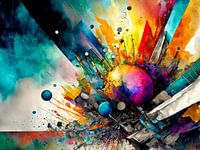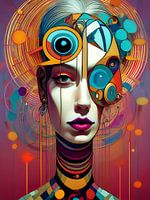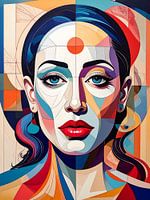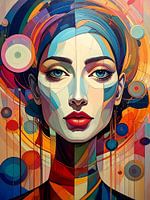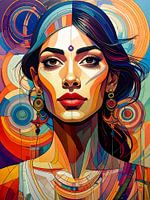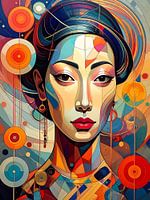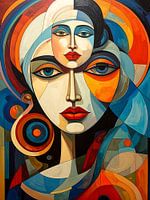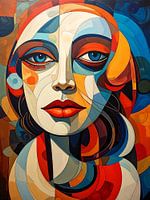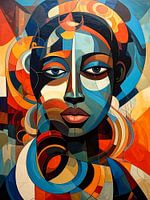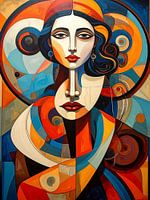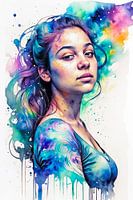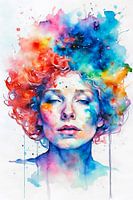Buy this digital art artwork False reflection by PixBox as a reproduction on canvas, ArtFrame, poster and wallpaper, printed on demand in high quality.
About "False reflection"
by PixBox
About the artwork
This "false reflection" is the visual representation of an inner dissonance. It is a look into a mirror that reflects not the external reality but the troubled landscape of the subconscious. The luminous, horizontal line in the centre does not function as a dividing wall, but as a field of tension in which the upper and lower halves of the picture - and thus also conscious and unconscious perception - meet and rub against each other. What we see are not exact mirror images, but asymmetrical counterparts that show how our self-image is distorted and changed. The geometric shapes on one side could represent rational thought, while the flowing, organic lines on the other represent emotion and intuition. The discrepancy between the two halves is what makes the picture so captivating. It is a metaphor for the human quest for identity and wholeness, and shows that what we project on the outside often does not match our inner core. The "false reflection" is a state in which we cannot fully recognise ourselves because parts of ourselves are hidden or distorted. The luminous, golden wave flowing through the image is the energy of self-perception, sometimes clear and distinct, sometimes diffuse and intangible. This image speaks of the search for harmony between the contradictory facets of our personality. It is an invitation to accept imperfection as part of our own beauty and to view dissonance not as a flaw, but as a motor for personal growth.
Created by PixBox with support from AI.

About PixBox
I have spent my entire professional career in the graphic design industry. Both professionally and privately, I have always been involved in photography. However, that was at a time when artificial intelligence was not generally accessible. I am now retired, but at the same time I am.. Read more…
 Germany
Germany Ordered in February 2023
Ordered in February 2023
 Germany
Germany Ordered in May 2025
Ordered in May 2025
 Netherlands
Netherlands Ordered in July 2023
Ordered in July 2023
 Netherlands
Netherlands Ordered in March 2021
Ordered in March 2021
 Germany
Germany Ordered in July 2019
Ordered in July 2019
 Germany
Germany Ordered in May 2019
Ordered in May 2019
 Netherlands
Netherlands Ordered in September 2020
Ordered in September 2020
 Germany
Germany Ordered in May 2021
Ordered in May 2021
 Germany
Germany Ordered in November 2020
Ordered in November 2020
 Netherlands
Netherlands Ordered in December 2021
Ordered in December 2021
 Germany
Germany Ordered in December 2024
Ordered in December 2024
 Netherlands
Netherlands Ordered in February 2023
Ordered in February 2023
About the material
ArtFrame™
Interchangeable Art Prints
- High-quality print
- Easily interchangeable
- Acoustic function
- Large sizes available
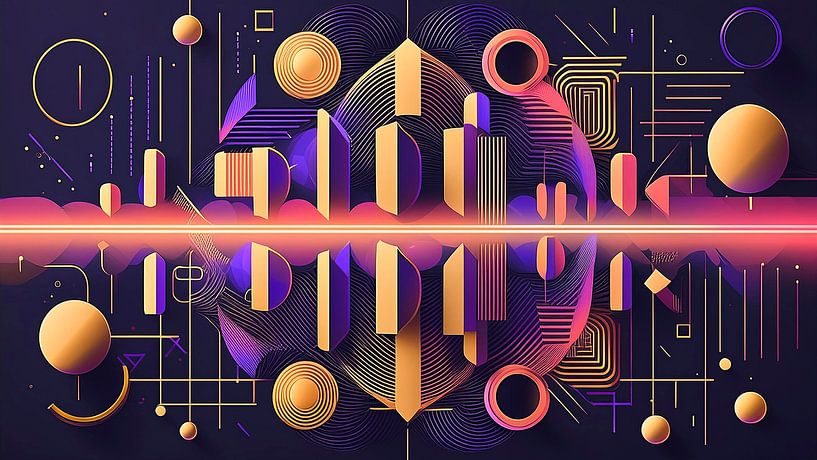






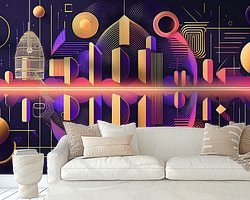





 Digital art
Digital art Geometric
Geometric Patterns
Patterns Reflections
Reflections Vibrant Colors
Vibrant Colors







